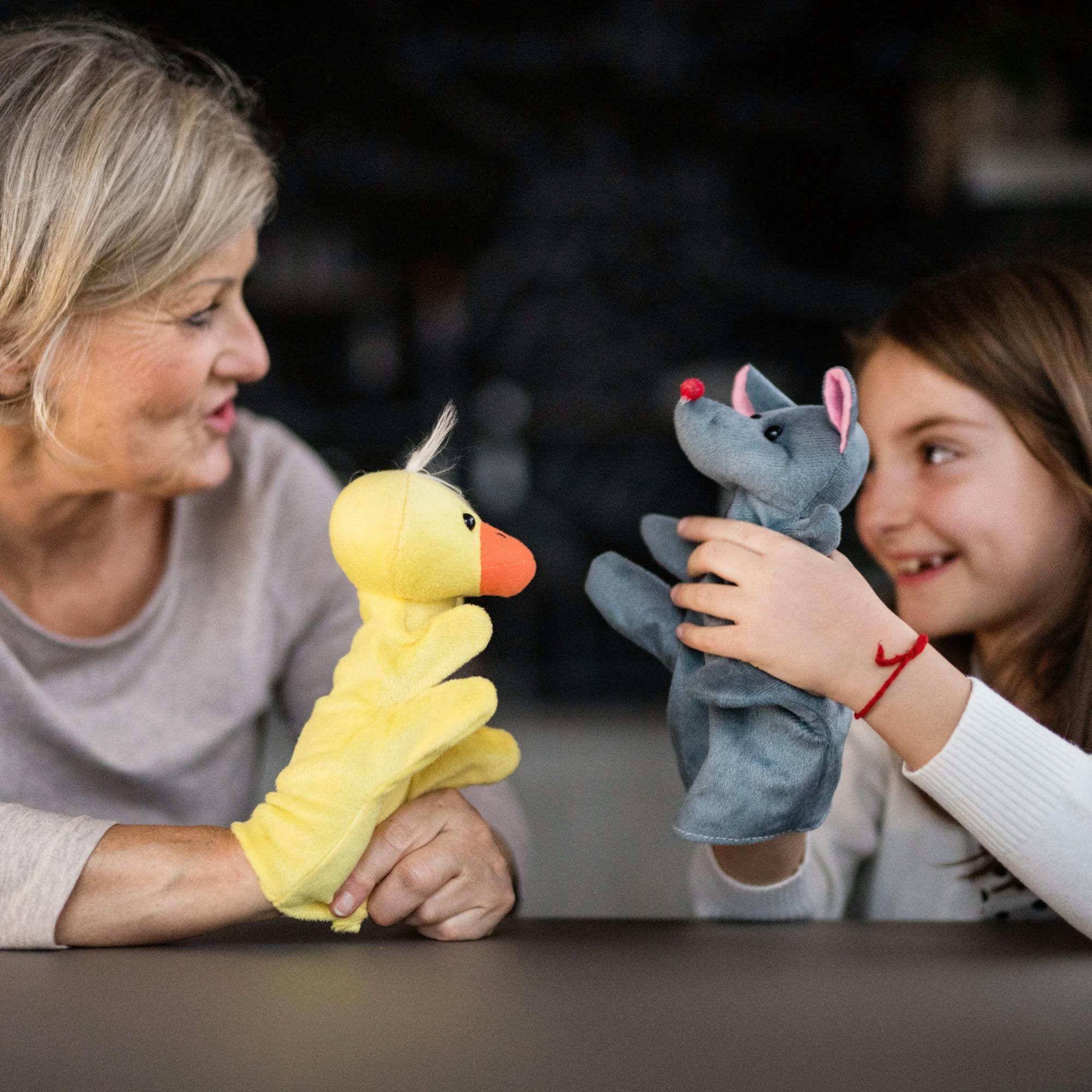
How to Practice Speech and Language with Your Child in the Car or On the Go
 Abby Barnes, M.S., CCC-SLP
Abby Barnes, M.S., CCC-SLP
To work, school, sports, lessons, errands–sometimes it seems like everything is go, go, go! When it comes to making time to practice speech with your child, your schedule might feel squeezed.
Here’s the good news. Whether you’re teaching your toddler to talk, or working on more advanced communication skills, plenty of speech and language techniques can be practiced anywhere–even on the go!
Read on for practical tips to help your child with a variety of speech and language skills while you’re riding together in a car, bus, or train. (Of course, safety is always most important. If you’re driving and any of these activities take your attention away from the road, don’t do them. Save them for another time.)
For kids learning to talk
Early communication is a lot of fun to practice while you’re on the go. What you do will vary depending on your child’s age and goals, but here are a few examples of things to try.
Environmental sounds include the sounds of cars (beep beep!), trains (choo choo!), police cars (weee-oooo!), and planes (zoooom!). Making the sounds of vehicles you see can motivate your child to imitate you and make the sounds themselves. Many times, toddlers start making environmental sounds before saying their first words, so this is a useful thing to practice.
If you live near farmland or lots of animals, you can also practice naming the animals you pass. Talk about the sounds they make as well. “There’s the cow! Moo. Cow says, ‘moooo’!’”
It’s also helpful to talk about what you and your child see outside the window. If you pass a firetruck, you might describe the “red” firetruck or the “big” firetruck. You can work on pairing words if your child is ready for it. You can try easy phrases like “red truck,” “big truck,” or even saying, “Hi truck!” Your child might not always repeat after you, but simply hearing your language models is helpful as they learn to talk.
Describe and talk about what you see outside the window.
Trucks and cows are normal, everyday things to us. But to toddlers and young kids, they’re a big deal! Maybe they have a small toy firetruck, but seeing a real one actually driving down the road is mindblowing. Get excited about what you see together. Your child will be motivated to learn the words you’re using.
Another fun activity is to practice action words like “stop” and “go.” When you’re at a red light, say, “Stop. The car is stopped.” When the light turns green, say, “Go!” You can even work on fill-in-the-blank phrases. Say, “Ready, set…” Then pause and see if your child will say “go!”


For kids working on articulation skills
If your child is working on their speech sounds, riding in the car can be the perfect time to practice. You’re together, with few distractions–and your child is a “captive audience.”
If you’ve got a child learning to pronounce certain sounds or words, try practicing a few of their targets every time you sit at a red light. You can set a goal of practicing 5 words per stoplight, or whatever number you can get through.
When listening to music, try practicing at every commercial break, or after every two songs. If you’re on public transport, you might practice at every second or third stop. Practicing in short segments like this helps kids stay focused, and they appreciate the break between each “burst” of practice.


For kids working on expressive language
If your child is focusing on their expressive language skills–how to clearly communicate their thoughts, wants, and needs–there are many things to try while riding in the car.
If they’re working on plural words, try discussing things you see and listening to whether your child is using the words correctly. Maybe you talk about all the “wheels” on an 18 wheeler or the “clouds” in the sky. Listen to see if your child uses the plural /s/.
Your child might be working on verb tenses. This involves things like correctly using -ing or -ed at the end of verbs, or using irregular past tense verbs (for example, “buy” and “bought”). You might ask, “What are we doing today?” to see if your child says something like, “Going to the store.” Or if you ask, “What did we buy at the store?,” see if your kiddo can say, “We bought apples and milk.”
For kids learning to manage a stutter
If your child is working on fluency skills for stuttering, try practicing different techniques as you talk together in the car, bus, or train. Make sure to talk with your child’s speech therapist so you know which strategies they’re learning and how to use them. You can practice with single words or sentences, or during conversation.


For kids learning social communication skills
Children working on social communication can practice their conversational skills while traveling with a caregiver. For some kids, staying on topic, introducing new topics, or making comments can be challenging. Riding together is a perfect opportunity to practice.
Before you start a conversation, tell your child the topic and what the expectations are. You might say, “Let’s talk about how our week is going. I’ll ask you how your week has been. After I ask you, try asking me how my week has been.”
If conversation stalls at any point, you can make a comment to show your child how to respond. “I loved hearing about your week! Can you ask me about my week?” If they still need help, you can model for them a way to ask the question: “You could say, ‘Mom, how’s work been this week?’”


Tips for practicing speech and language with your child at home
For children working on communication skills, it can’t be overstated how important daily practice with a caregiver is. Kids learn best with those they love and spend time with every day. So who better to practice with than you?
Daily practice helps kids carry over and reinforce what they’ve learned in speech therapy. The more you practice together, the faster your child will progress! Remember, speech practice doesn’t have to be fancy or complicated. Keep it simple and functional, focusing on words, phrases, and skills that your child can use in their everyday life.
In many cases, 5 to 15 minutes of practice is all that’s needed.
Speech practice should be fun and non-stressful. But watch for when your child needs a break. Remember that practice doesn’t need to last long. In many cases, 5 to 15 minutes is all that’s needed. But if your child is getting frustrated, be sensitive to that. Let them take a break and practice another time.
Also, be sure to give your child tons of encouragement and praise. Let them know you see how hard they are working!


How do you know if your child needs speech therapy?
Practicing with your child at home has so many benefits. But you’ll see the best results when you receive care and guidance from a licensed speech therapist.
If you’re concerned at all about your child’s communication, feel free to reach out to us here at Expressable to get matched with a speech therapist. You can also take our easy online screener for some quick insight into whether your child could benefit from a speech evaluation.
How Expressable Can Help
Concerned your child isn't reaching age-expected milestones? Looking for communication support from a professional? Expressable is a national online speech therapy practice serving children and adults. We treat all major areas of communication and feeding, offer flexible hours including evenings and weekends, and accept most major health insurance plans. We’re proud to have earned more than 3,000 5-star reviews from our clients (4.9/5 average).
Our therapy model is centered on parent and caregiver involvement. Research proves that empowering caregivers to participate in their loved one’s therapy leads to better outcomes. That’s why we combine live, 1-on-1 speech therapy with personalized education and home practice activities for faster progress.
Communication is more than words. It’s how we share how we feel and show who we are. We’re here to help you or your child do just that.






